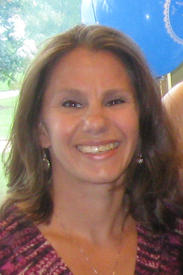Calories burned during a NRoL4W workout

bizco
Posts: 1,949 Member
I use a Timex HRM with chest strap. I start it after my warm-up and at the start of the first lifting exercise (A). I stop it after the last lifting exercise (for example D2 or E) so the program's rest periods are counted. I rest a little bit after the last lift and then I start the HRM again at the beginning of the interval training or body matrix (I'm in Stage 3). If I'm doing interval training I stop the HRM immediately after the 15 minutes are up. If doing the body matrix, I stop it after the first set, rest the required time, and start the HRM again at the beginning of the second set; stopping it immediately after completing the set. So cool-down it not counted.
We all know MFP's default exercise database is terribly inaccurate, especially when it comes to logging strength training. When I log my NRoL4W workouts in MFP I enter the minutes as shown on my HRM (scenario above). But when it comes to logging the calories burned, I just don't believe the high number my HRM shows; it can be over 700 calories for 68 minutes. I've seen other MFP posts where people say Timex HRMs are not accurate. So I end up logging a much smaller number (300-350). Please don't suggest that I get a different HRM like a Polar, I can't afford it right now. Yes, all my HRM settings are correct.
How do you determine what to log for calories burned for your NRoL4W workouts? Thanks!
We all know MFP's default exercise database is terribly inaccurate, especially when it comes to logging strength training. When I log my NRoL4W workouts in MFP I enter the minutes as shown on my HRM (scenario above). But when it comes to logging the calories burned, I just don't believe the high number my HRM shows; it can be over 700 calories for 68 minutes. I've seen other MFP posts where people say Timex HRMs are not accurate. So I end up logging a much smaller number (300-350). Please don't suggest that I get a different HRM like a Polar, I can't afford it right now. Yes, all my HRM settings are correct.
How do you determine what to log for calories burned for your NRoL4W workouts? Thanks!
0
Replies
-
Thanks for answering, I think I asked you about this!
It depends.
If I do a tough session, and I'm dripping sweat, I'll count about 75% of the time and log it under Cardio - Strength Training, which gives me less than 200 calories burned for 45-60 minutes, even if the session lasts 90 minutes! If the session wasn't as hard for some reason, I log only the time actually lifting, no rest periods, and I'm thankful for the short cardio warm up because then my workout pays for my protein shake.0 -
I've read a lot that indicated that a HRM isn't valid for strength training. The way I understand it is that it's the movement that actually burns calories, not the elevated heart rate. So even though your heart rate is elevated during rests periods you aren't moving so you aren't burning as many calories as the HRM thinks you are. So it'll give you higher number than you really burned.
I just give myself 200 calories for my workouts. That came from some other website i found with google.0 -
purely strength training time spent in the weight room I'm about 150 base on my hrm, but I run for 10 or 15 minutes before to warm up my muscles before I lift so that's a bit more and I let the hrm run for about 10 minutes after. Rachel is right, it's tough to know what your true burn is when lifting because your hr doesn't go up like aerobic activity. The burn is longer lasting. It's like burning pine versus burning cherry.0
-
I give myself 150 calories including 5 minutes on the elliptical0
-
So you enter your minutes and use whatever MFP gives you for calories burned?Thanks for answering, I think I asked you about this!
It depends.
If I do a tough session, and I'm dripping sweat, I'll count about 75% of the time and log it under Cardio - Strength Training, which gives me less than 200 calories burned for 45-60 minutes, even if the session lasts 90 minutes! If the session wasn't as hard for some reason, I log only the time actually lifting, no rest periods, and I'm thankful for the short cardio warm up because then my workout pays for my protein shake.0 -
So you enter your minutes and use whatever MFP gives you for calories burned?Thanks for answering, I think I asked you about this!
It depends.
If I do a tough session, and I'm dripping sweat, I'll count about 75% of the time and log it under Cardio - Strength Training, which gives me less than 200 calories burned for 45-60 minutes, even if the session lasts 90 minutes! If the session wasn't as hard for some reason, I log only the time actually lifting, no rest periods, and I'm thankful for the short cardio warm up because then my workout pays for my protein shake.
Yep. I'd rather estimate under than over.0 -
This is why I don't use my HRM for strength training. You just don't burn as many cals as doing cardio plus I think the HRM's aren't accurate for non-cardio exercises. I haven't worn mine in a while and I haven't logged exercise since I started this program.0
-
All this is true---but with lifting (strength training) you are burning more calories post workout than if you were doing cardio only. So I do use my HRM and I log the calories as it outputs. I figure that it gives a pretty "general" picture of what is happening in my body. I'm probably wrong, lol. Some of the workouts, the ones involving more legs, definitely keep my HR up higher & longer. I wish I had a PT that could tell me all the ins & outs so I could take the best path to the leanest body possible!
I think after I finish NROL (not sure if I'll go all the way through the last stages or not) I am going to try Jamie Eason's Live Fit program (if it's still up on her site for free) after the New Year. I want to make it through the Holidays before I committ to her strict diet plans.0 -
I just enter it at 180 calories, because then it zeros out the calories of my protein shake. I think MFP would give me closer to 125 if I use their default number for 45 minutes, but 180 seems to be working okay for me so far.0
-
I've read a lot that indicated that a HRM isn't valid for strength training. The way I understand it is that it's the movement that actually burns calories, not the elevated heart rate. So even though your heart rate is elevated during rests periods you aren't moving so you aren't burning as many calories as the HRM thinks you are. So it'll give you higher number than you really burned.
I just give myself 200 calories for my workouts. That came from some other website i found with google.
I'm sorry but this is patently untrue. What do you think elevates your heart rate at any given time? Movement. That's why there's your resting heart rate and your non-resting heart rate. Strength training is no different from cardio in that it is movement in general that will elevate your heart rate and exertion during said movement.
I have a Polar F4T heart rate monitor and it shows that I burn approximately 230 calories per 30 minute session of NROLFW. This is almost twice the figure given by MFP. I am sweating and I can barely talk once I'm done my sessions so I think my HRM's take on things is fairly accurate.0 -
I'm going to have to wear mine during my next workout tomorrow morning just to see what it says. I also have a Polar Ft4.0
-
All this is true---but with lifting (strength training) you are burning more calories post workout than if you were doing cardio only. So I do use my HRM and I log the calories as it outputs. I figure that it gives a pretty "general" picture of what is happening in my body. I'm probably wrong, lol. Some of the workouts, the ones involving more legs, definitely keep my HR up higher & longer.
I do this too as I feel it will balance out the afterburn that obviously doesn't get logged. I also don't stop and start my HRM during workouts or if I change from lifting - cardio and vice versa because I'm still burning in between0 -
All this is true---but with lifting (strength training) you are burning more calories post workout than if you were doing cardio only. So I do use my HRM and I log the calories as it outputs. I figure that it gives a pretty "general" picture of what is happening in my body. I'm probably wrong, lol. Some of the workouts, the ones involving more legs, definitely keep my HR up higher & longer.
I do this too as I feel it will balance out the afterburn that obviously doesn't get logged. I also don't stop and start my HRM during workouts or if I change from lifting - cardio and vice versa because I'm still burning in between
I do the same thing. If I lift and then hit the treadmill, I just keep my HRM going.0 -
I think what she meant is that while resting between sets, your heart rate is still elevated (compared to your "resting heart rate") even though you're not moving. So like, your heart rate at rest is 65. You do a set of squats and your heart rate is 155. You rest for 60 seconds, and your heart rate gets down to 130 - so your HRM still thinks you're doing some work even though you're sitting on a bench looking at your ipod.I've read a lot that indicated that a HRM isn't valid for strength training. The way I understand it is that it's the movement that actually burns calories, not the elevated heart rate. So even though your heart rate is elevated during rests periods you aren't moving so you aren't burning as many calories as the HRM thinks you are. So it'll give you higher number than you really burned.
I just give myself 200 calories for my workouts. That came from some other website i found with google.
I'm sorry but this is patently untrue. What do you think elevates your heart rate at any given time? Movement. That's why there's your resting heart rate and your non-resting heart rate. Strength training is no different from cardio in that it is movement in general that will elevate your heart rate and exertion during said movement.
I have a Polar F4T heart rate monitor and it shows that I burn approximately 230 calories per 30 minute session of NROLFW. This is almost twice the figure given by MFP. I am sweating and I can barely talk once I'm done my sessions so I think my HRM's take on things is fairly accurate.0 -
I think what she meant is that while resting between sets, your heart rate is still elevated (compared to your "resting heart rate") even though you're not moving. So like, your heart rate at rest is 65. You do a set of squats and your heart rate is 155. You rest for 60 seconds, and your heart rate gets down to 130 - so your HRM still thinks you're doing some work even though you're sitting on a bench looking at your ipod.I've read a lot that indicated that a HRM isn't valid for strength training. The way I understand it is that it's the movement that actually burns calories, not the elevated heart rate. So even though your heart rate is elevated during rests periods you aren't moving so you aren't burning as many calories as the HRM thinks you are. So it'll give you higher number than you really burned.
I just give myself 200 calories for my workouts. That came from some other website i found with google.
I'm sorry but this is patently untrue. What do you think elevates your heart rate at any given time? Movement. That's why there's your resting heart rate and your non-resting heart rate. Strength training is no different from cardio in that it is movement in general that will elevate your heart rate and exertion during said movement.
I have a Polar F4T heart rate monitor and it shows that I burn approximately 230 calories per 30 minute session of NROLFW. This is almost twice the figure given by MFP. I am sweating and I can barely talk once I'm done my sessions so I think my HRM's take on things is fairly accurate.
But regardless, your heart rate is still 130 for a reason whether you're fiddling with your ipod after exerting yourself to the extreme or doing steady state cardio. I just hate seeing misinformation on these threads and people agreeing with it when it's untrue.0 -
"A HRM won't give you an accurate idea of how many calories you burn during strength training, because the relationship between heart rate and calorie expenditure is not the same during strength training as during cardio exercise, which is what the HRM's estimate is based on. Unless your weight training is very vigorous circuit training, the heart rate monitor will be overestimating your calorie burn by a fair amount."
Rest of the explanation at http://www.sparkpeople.com/community/ask_the_experts.asp?q=750 -
So I wore my HRM today just to see how many cals I would burn. It gave me 317 cals burned in just over an hour. So is that accurate or not? If it is then I'm pretty excited!0
-
I wear my HRM for strength training (with or without cardio intervals) and do not start/stop it during the workout. I think it's been pretty accurate relative to how it tracks calories burned for other excersises.
If your HR is elevated, even if you are on a "rest" and not moving, it make sense to me that your body is still working harder (i.e., burning more calories) than if you were sleeping, for example.
I also generally subtract out my BMR (75 - 100 cals/hour for me) before logging any exercise calories burned in MFP, to try to be a little more accurate since I would be burning these calories anyway in the time I spent workng out if I didn't do the work out.0
This discussion has been closed.








